My Beekeeping – Tips and Tricks
A talk by Nick Silver at the EDBK winter social
7th December 2023
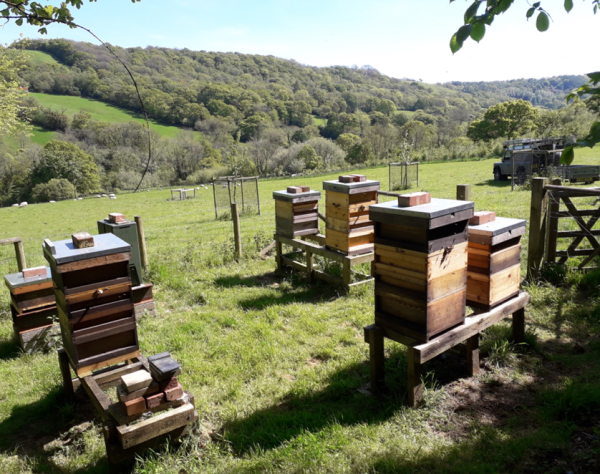
I started beekeeping in 2015 and now have 16 colonies (9 for production plus 7 nucs) spread around four apiary sites. The aim is to produce good quality food products. This year I had 550 lbs of honey.
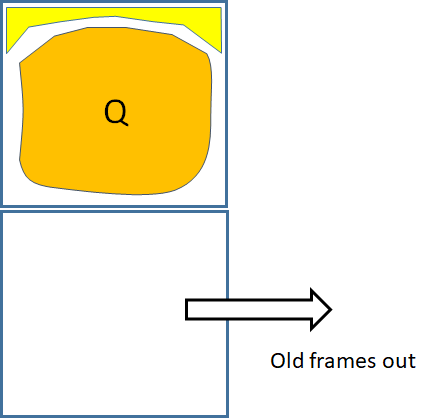
I use double National brood boxes on production hives. Management starts early in the season. In April, all colonies are checked carefully for disease (Module 3 is extremely useful for this).
Now is the time to carry out replacement of old, diseased and distorted frames. Select the 7 oldest frames, usually found in the lower brood box, and replace with fresh foundation. Make sure all the new foundation is in the upper brood box or swap the boxes if its easier. This ensures a maximum of 3 years for frame rotation. Incidentally, there is no need for Bailey frame change or feeding.
Starter strips for drone brood
In spring, the bees are desperate for drone comb, so insert frames with starter strips between two drawn combs. These will be preferentially used for drones, protecting your brood frames from disruption. It is also a good trick if you are low on foundation!
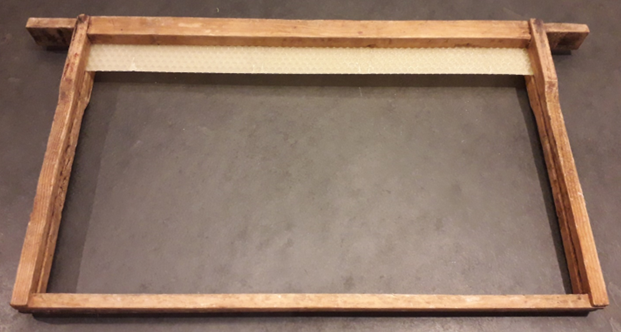 Starter strip
Starter strip
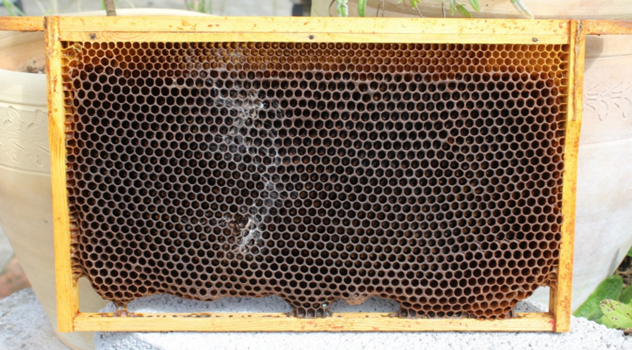 Old starter strip
Old starter strip
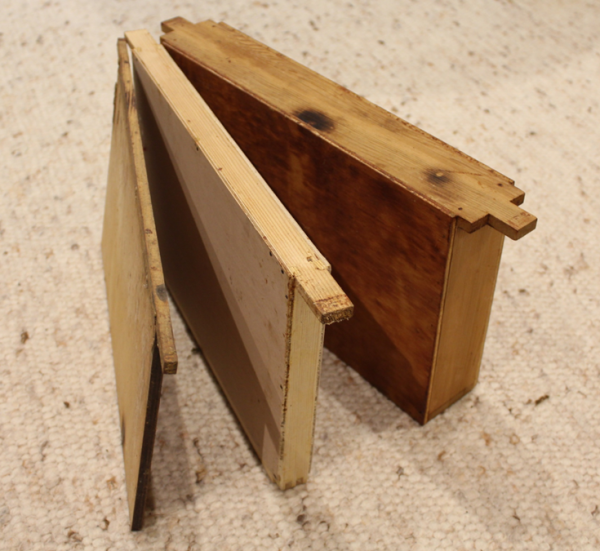
Use of dummy boards
I use three different widths in order to adjust the space available to the bees. I find this useful if the colony is a bit small. Alternatively, if you are greedy, you can force more honey into the supers.
Queen rearing and making increase
Again, start early! This schedule worked for me in 2023:
| Mid April | Select a strong colony. |
| 20th April | Remove Q into a nuc. |
| 25th April | Remove 6 frames, all with QCs, distribute into 3 more nucs. |
| 24th May | Donor colony has new laying Q. Went on to produce 2 full supers of honey. |
| 29th May | All three mating nucs have laying queens. |
Result from one colony: 4 viable nucs, 4 new queens, 2 supers honey
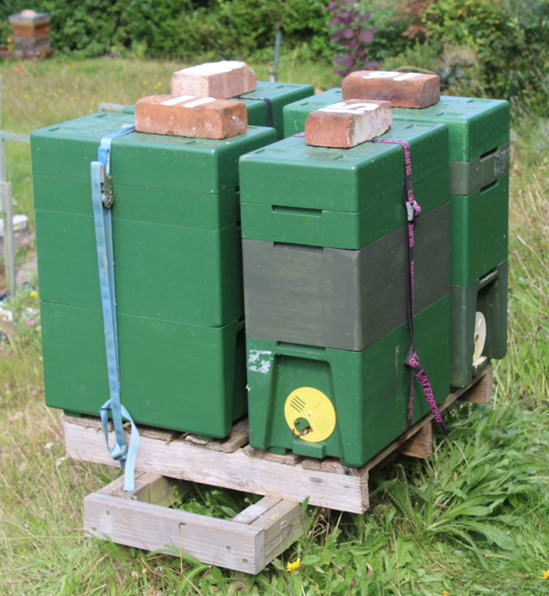 Making increase
Making increase
 Taking a spring crop
Taking a spring crop
Take a spring crop
- Oil seed rape now quite common (see graph above).
- Take off this crop and the bees will work harder.
- More total honey per colony.
- You need to learn how to store and process OSR.
- Don’t lose valuable drawn comb with hard set OSR.
- We need to train our customers to like it. Younger people often prefer it.
Unite and / or boost before the flow
It’s easy to build up your honey production colonies using nucs as donors. This is effectively a simple two queen system. If you then move the nucs to another part of the apiary, the honey producing colonies will gain the flying bees as well! If this is done early enough, the nucs will recover during the rest of the season.
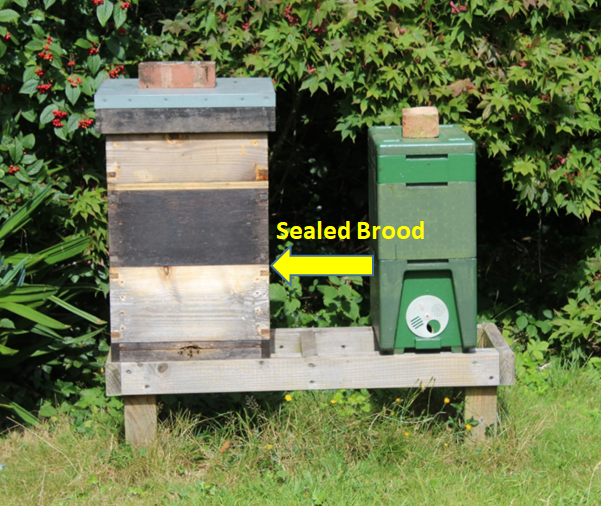
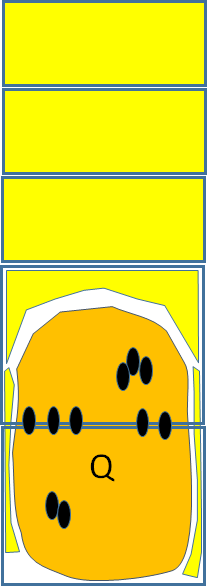
Using double National brood boxes – May, June, July
Ensure you can double up during May, June and July. Advantages are;
- The arch of honey in the upper brood box protects the supers from pollen.
- Supers can be removed anytime without concerns over starvation.
- Bees respect the bee space between the brood boxes.
- Swarm cells tend to be built between the brood boxes. Thus no need for full inspections. Just tilt and smoke.
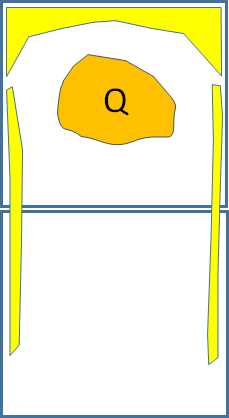
Using double National brood boxes – August
By August, the bees have their arch of honey in the upper brood box and the brood area is reducing. Himalayan balsam will boost the nectar flow. Varroa treatment can be administered if needed, otherwise it is safe to go on holiday!
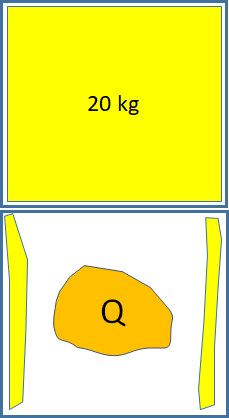
Using double National brood boxes – September
You will need about 20kg of stores in your hive by the middle of October when feeding ceases. The theoretical maximum for one National brood box is 25kg, so a single brood box hive would only have a couple of frames for the bees to live on with 20kg stores.
Alternatively, leave them a super of honey but this raises questions.
- Do you leave the queen excluder in or out?
- What do you do in the spring?
- What do you do with any honey left in the super?
- It may be contaminated with varroa treatment products.
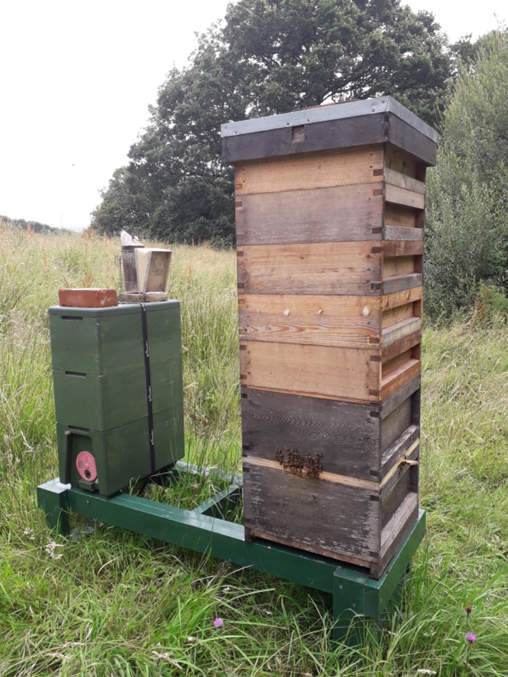
Double brood – disadvantages
- Harder to move double brood hives.
- Hives can get rather high.
- Can lead to very strong colonies which could be daunting to newbies.
- Requires more boxes.
These could be good problems to have!
Swarm control with double brood boxes
There are so many options! Here are a few suggestions:
- Move top box onto a new floor (Pagden)
- Remove queen into a nuc.
- Remove queen cells into a nuc.
- Snelgrove or Demaree.
- Basterfield vertical split (Q in the bottom). Link – BBKANews Nov 2013 p19
- And many others…..
Other Tips and Tricks
Bait Hives and Swarm Attractants
For those situations where you need to attract and catch a swarm, attractants just work surprisingly well. All you need is a brood box, two old frames and swarm attractant. Put the box in a suitable place and wait. The pictures show the hiving of a swarm just driven out of a chimney by lighting the fire.
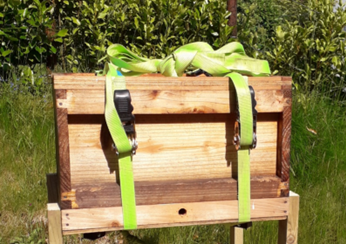 Bait hive
Bait hive
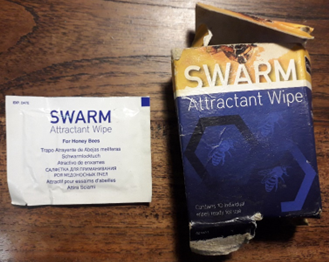 Swarm attractant
Swarm attractant
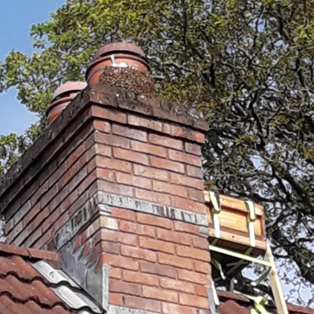 Swarm on chimney
Swarm on chimney
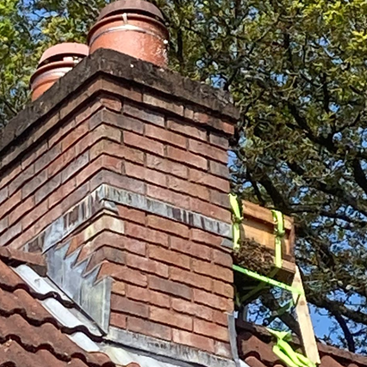 Swarm on bait hive
Swarm on bait hive
Returning the queen to the hive after handling her
The problem is the odour from your queen clip or your hands may cause the queen to be killed if she is just put straight back into the colony. To avoid this happening, take a frame with some brood, shake off the older bees, and release the queen onto the frame. It is now easy to see if she is accepted or rejected. If accepted, put the frame with her on gently back into the hive.
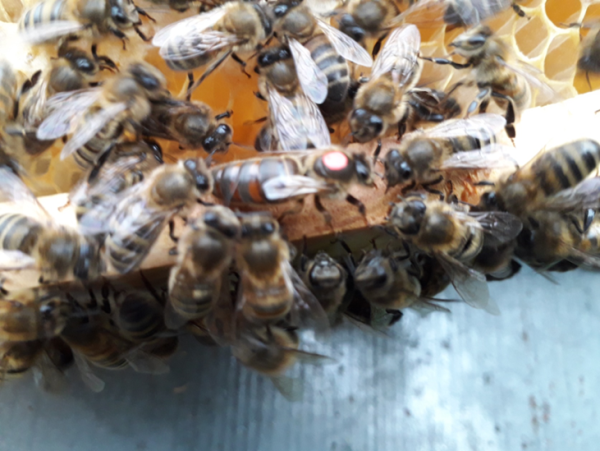
Clearing bees from supers
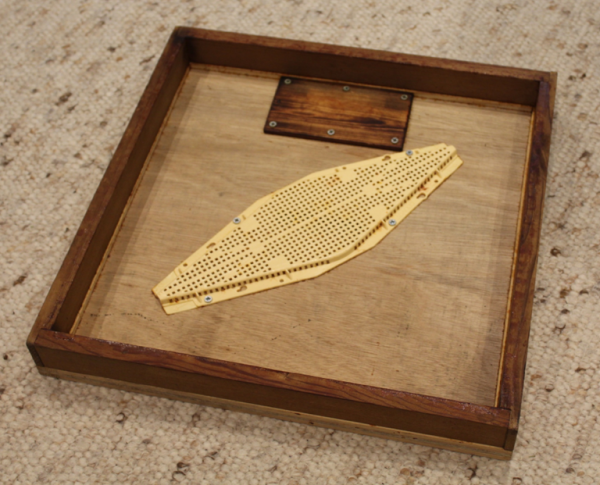
I use rhombus bee escapes with an eke below so that the bees have space to go down into. They should all be down overnight. Note; the image on the left is upside down
Porter bee escapes in the crown board are fiddly, slow and prone to propolising. If you are in a hurry, shaking bees off capped honey is surprisingly easy and efficient. The frames need to be immediately placed in a covered container.
Feed Calculation
Feeding large numbers of colonies is hard work, so make things easier for yourself.
Always have spare syrup to carry with you.
Over-feeding creates extra work next spring.
Feed what they need – no more – no less.
To calculate the quantity of stores in your colonies:
Both sides of a full BS brood frame equals 2.3 kg stores (5 lbs).
Estimate the value for partially filled frames.
Total all the values together. Should be around 20 kg (44 lbs).
Thanks, Nick, for a thought provoking talk. Beginners through to experienced beekeepers can find something there to improve their hive management.